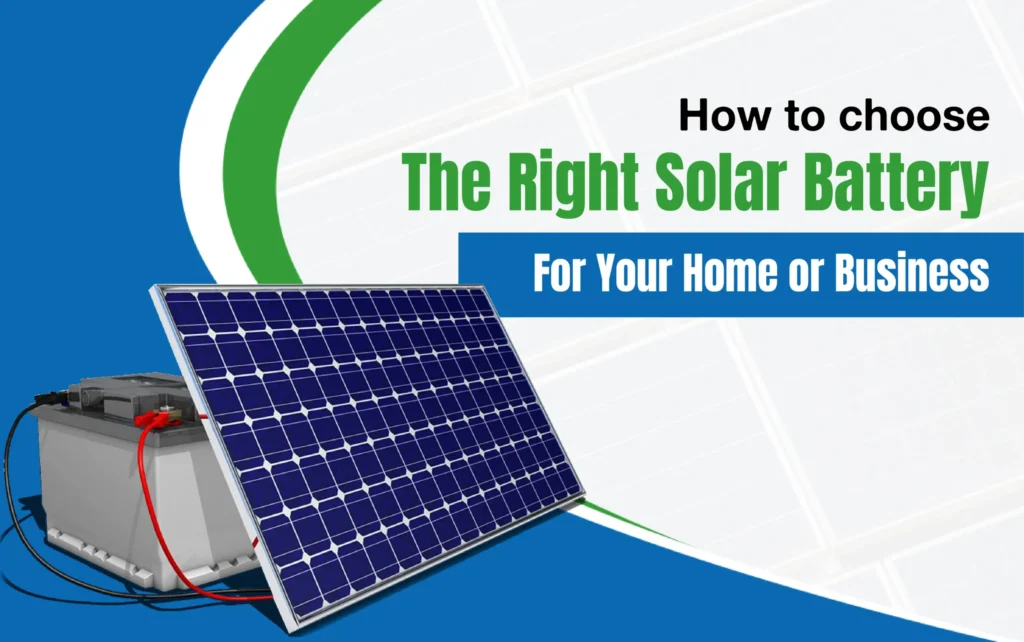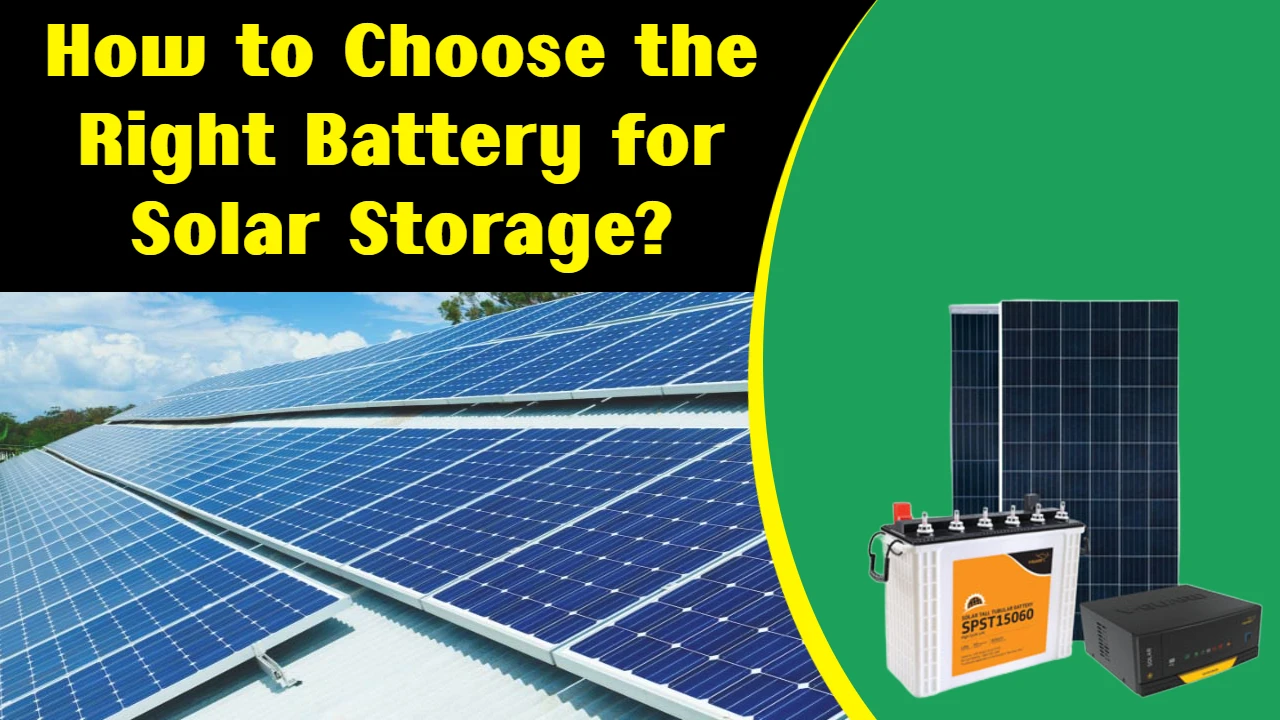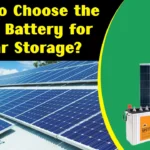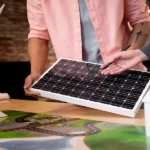Solar panels generate electricity, but without a battery, you may not be able to use that power when you need it most. A solar battery stores the extra electricity your panels make during the day. Later, you can use this stored energy at night or during a power cut. Choosing the right solar battery is very important for Indian homes. A wrong choice can lead to high costs, poor performance, and frequent replacements. A smart choice gives you long backup, low maintenance, and peace of mind.
Why a Solar Battery Matters for Indian Homes
In India, power cuts are still common in many states. A solar battery gives you electricity even when the grid fails. It also helps you use more of your solar energy at night, reducing your dependence on the grid. A good solar battery reduces your monthly bills, saves you from expensive peak-time tariffs, and cuts down diesel generator use. This is why homeowners today prefer solar with storage rather than just grid-tied systems.
Types of Solar Batteries You Can Choose

There are different types of batteries available for solar systems. Each comes with its pros and cons.
Lead-Acid Batteries
These are the oldest and most common. They are low-cost, but they need regular maintenance like water refilling. They are heavy and occupy more space. Their usable capacity is less because you cannot fully discharge them without harming the battery. They usually last 3–5 years in Indian conditions.
Lithium-Ion Batteries (LiFePO4)
Lithium iron phosphate (LiFePO4) batteries are the most popular choice today. They are safer, lighter, and more compact. They allow deep discharge, meaning you can use up to 80–90% of their stored energy. Their lifespan is long, often 8–15 years, making them cost-effective in the long run. They need almost no maintenance.
Other Chemistries
Other lithium chemistries like NMC are mostly used in electric vehicles. Flow batteries are being developed for large-scale projects but are not yet common for homes in India. For residential solar, LiFePO4 batteries are considered the best balance of performance, safety, and cost.
Also Read 12 Costly Solar Mistakes Homeowners in India Must Avoid for Maximum Savings
Important Battery Specifications to Understand
Before buying a solar battery, you should understand some key specifications.
- Capacity (kWh): This is the total energy the battery can store.
- Usable Capacity: This is the amount of energy you can actually use after accounting for depth of discharge.
- Depth of Discharge (DoD): This shows how much of the battery’s capacity can be used safely. Higher DoD means more usable energy.
- Round-Trip Efficiency: This measures how much energy you get back compared to what you put in. Lithium batteries have higher efficiency, usually above 90%.
- Cycle Life: This tells you how many times the battery can be charged and discharged before its capacity drops significantly. LiFePO4 batteries often give 3,000–6,000 cycles.
- Warranty: Always check both years and cycles covered.
- Peak Power Rating: This tells you the maximum power the battery can deliver at once. It must match your home’s appliances and inverter.
How to Size a Solar Battery for Your Home
Many homeowners buy batteries that are either too small or too big. The right size saves money and ensures reliable backup.
- List Your Critical Loads: Decide what you want to run during a power cut. This may include lights, fans, a fridge, TV, Wi-Fi, or maybe even one air conditioner.
- Calculate Backup Hours: Estimate how long you want these loads to run. For example, running 1.5 kW of load for 6 hours means you need about 9 kWh of energy.
- Account for Efficiency: A 9 kWh requirement may actually need an 11 kWh battery once you consider efficiency and depth of discharge.
- Match with Your Solar Panels: Your solar panels must be large enough to fully recharge the battery during the day.
- Plan for the Future: If you plan to add an EV charger or more appliances, buy a modular system that can be expanded later.
Lead-Acid vs Lithium Batteries for Indian Homes
Lead-acid batteries are cheaper upfront, but they need maintenance and have shorter life. They are good only if you use them occasionally. Lithium batteries, especially LiFePO4, are more expensive initially but last longer and save more money over time. For daily use, lithium batteries are a smarter investment.
Safety and Standards for Solar Batteries
When buying a solar battery in India, always check for safety certifications like BIS and IEC. This ensures the battery has passed fire and quality tests. Install the battery in a cool, ventilated, and secure space. Avoid exposing it to direct sunlight, dust, or moisture. For larger systems, make sure an expert installer handles wiring, earthing, and safety devices.
Maintenance of Solar Batteries
- Lithium Batteries: Almost maintenance-free. Just keep the battery terminals clean and check the app or monitoring system for alerts.
- Lead-Acid Batteries: Need regular water topping and careful usage. Poor maintenance reduces their life quickly.
Whichever battery you choose, it is wise to do an annual health check with your installer.
Common Mistakes Homeowners Make
- Choosing a battery without checking usable capacity.
- Buying a battery too small for their needs.
- Installing a battery that is not compatible with their inverter.
- Ignoring warranty terms and after-sales service.
- Forgetting to ask about recycling or disposal options.
Cost and Subsidy Options in India
The Indian government provides subsidies mainly for rooftop solar systems under the PM Surya Ghar scheme. Batteries are not always included in these subsidies, but some state policies offer support for storage in specific cases. Always check the latest rules with your DISCOM or installer before making a decision. Even without subsidies, batteries save money by reducing diesel use and cutting bills during peak hours.
Recycling and End-of-Life
Batteries must be disposed of responsibly. Lead-acid batteries are already recycled widely in India. Lithium battery recycling is growing. When buying, ask your vendor about take-back and recycling programs. Responsible disposal protects the environment and ensures resources are reused.
Final Checklist Before Buying a Solar Battery
- Pick lithium iron phosphate (LiFePO4) for daily solar use.
- Check usable capacity, not just nominal size.
- Match the battery to your inverter and loads.
- Verify safety certifications and warranty details.
- Choose a vendor with local service support.
- Ensure recycling or disposal options are available.
FAQs
Q: How long do lithium solar batteries last?
A: Lithium (LiFePO4) solar batteries usually last 8–15 years, depending on usage.
Q: Can I add a battery later to my solar system?
A: Yes. If your inverter is battery-ready or if you use an AC-coupled system, you can add batteries later.
Q: Is a solar battery worth the cost in India?
A: Yes, especially if you face frequent power cuts or want to reduce diesel generator use. Over time, lithium batteries pay back through savings and reliability.
Q: What is the best solar battery for Indian homes?
A: Lithium iron phosphate (LiFePO4) is the best choice for most homes because of its long life, safety, and efficiency.
Q: Do solar subsidies cover batteries?
A: Most central schemes cover solar panels and inverters. Battery subsidy depends on state policies, so check local updates.
Conclusion
A solar battery makes your solar system complete. It ensures energy independence, lower bills, and backup during power cuts. In India, lithium iron phosphate batteries are the most reliable choice for homes. Before you buy, size your battery properly, check warranties, and confirm safety standards. A well-chosen solar battery can give you peace of mind and clean power for the next decade or more.










